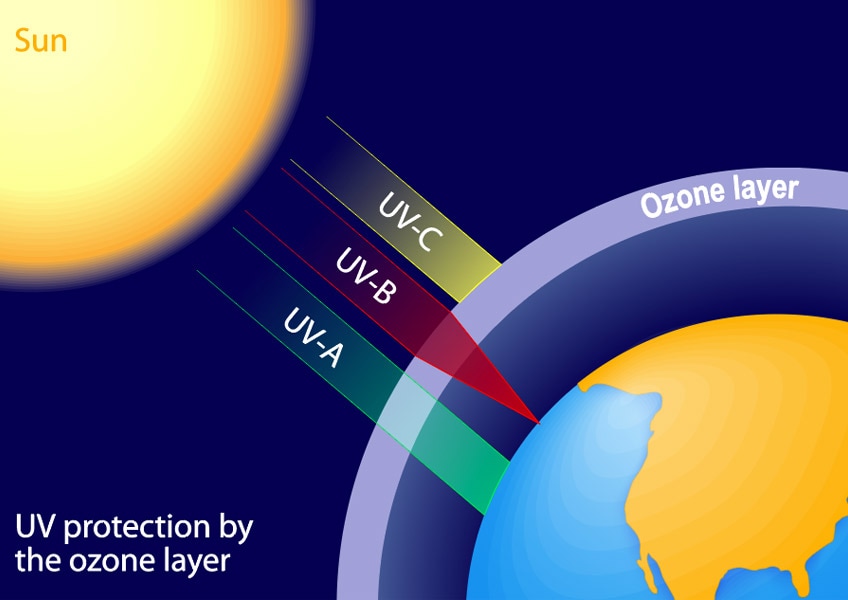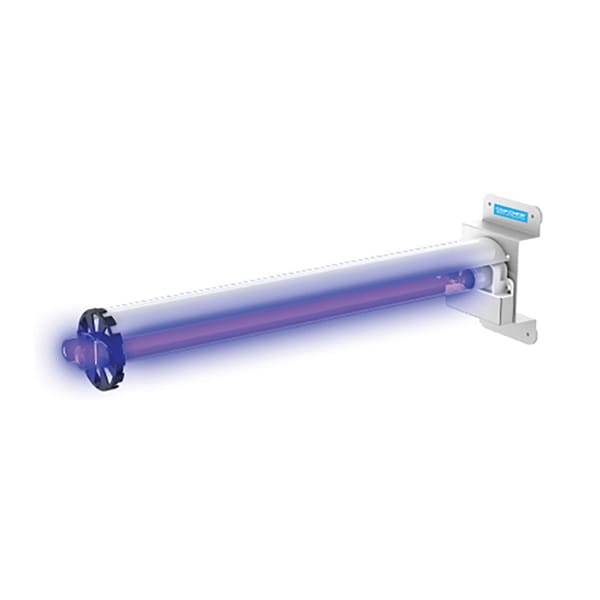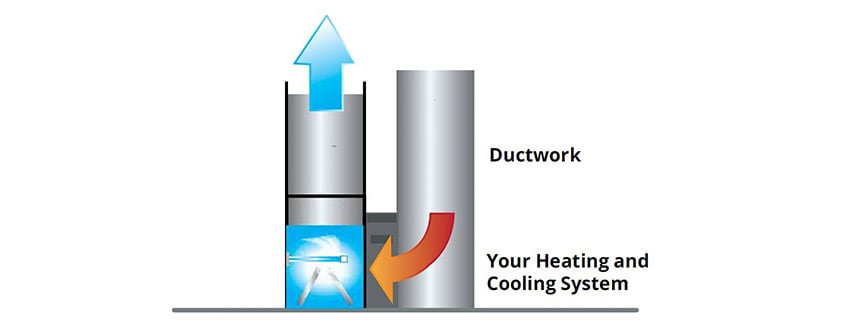
The Power of UV Disinfection
How would you like the power to destroy up to 99% of the germs in your home or business? With Ultraviolet light, or UV-C light technology, you can harness the power of the sun in your hands to make your indoor air cleaner than ever before!
UV disinfection has been around for decades in hospitals and other medical facilities to help prevent the spread of airborne infectious disease. More recently, UV lamps, also known as germicidal lamps, have been used in HVAC systems to help disinfect the passing air and restore efficiency by cleaning the internal parts.
What is UV-C Light?
UV-C light, also known as the ultraviolet germicidal wavelength (UVGI) is one of four types of UV produced by the sun:

- UV-A light has long wavelengths ranging from 315 nm to 400 nm. It passes through the atmosphere and can cause skin damage and premature aging in humans.
- UV-B light has medium wavelengths ranging from 280 nm to 315 nm and causes sunburn in humans.
- UV-C light has short wavelengths ranging from 200 nm to 280 nm. It is blocked by the earth's ozone layer and does not naturally pass through the atmosphere.
- Vacuum UV has very short wavelengths ranging from 100 nm to 200 nm. It occurs only in a vacuum, like space.
Due to its short wavelength and high frequency, UV-C germicidal light has proven highly effective at disinfection. Although it doesn't naturally pass through the atmosphere, it can be artificially created in the form of a UV lamp.
How Does UV Disinfection Work?
UV-C light is easily absorbed by biological materials. It breaks through cell walls and radiates deep to interrupt the DNA and RNA. Once UV-C breaks the DNA strands, the cell either dies or is unable to replicate. If a microbe survives germicidal light, it's because it has an exceptional ability to repair itself (like certain cysts), or it wasn't exposed to the light long enough.
Always wear skin and eye protection when working around germicidal light.
If improperly handled, UV-C radiation can cause skin and eye damage. Recent research has found that a narrow band of UV-C (207-222 nm) can inactivate (render harmless) microbes without harming human skin, which is a promising discovery for the future of the technology.
Does UV Light Kill Germs?
 UV-C light has proven effective at killing a broad range of germs, including bacteria, viruses, and mold. In a 2018 study, researchers tested whether germicidal light can kill the airborne flu virus. They exposed the virus to low levels of germicidal light, which scrambled its DNA and made it harmless.
UV-C light has proven effective at killing a broad range of germs, including bacteria, viruses, and mold. In a 2018 study, researchers tested whether germicidal light can kill the airborne flu virus. They exposed the virus to low levels of germicidal light, which scrambled its DNA and made it harmless.
Similar tests have shown UV-C to be effective at killing Measles, Smallpox, MRSA and other drug-resistant super bacteria. Although tests have not been done on all microorganisms, experts believe that UV-C light can effectively destroy most at the right intensity levels, lamp placement, and exposure times. For example, ASHRAE lists UV-C as one of only three ways of controlling airborne infection, the others being filtration and ventilation.
HVAC UV Lights
For homes, businesses, and critical facilities, HVAC-mounted UV-C lamps are increasingly being recognized for their effectiveness in reducing microbial buildup on cooling coils and in disinfecting passing air.

Mold, bacteria, and other types of microbes thrive in the cool, moist area inside a cooling system. Over time, these microbes accumulate and reduce system efficiency. Essentially, the coil cannot effectively cool when it's smothered in microbes, so the fan works harder to maintain the desired temperature. All this leads to discomfort, maintenance problems, and shorter system lifespan.
At the same time, your HVAC system and ducts could transport viruses and bacteria around the house. Imagine your spouse is sick in one room. They cough, and it releases germs that get sucked into the return air duct. If they're small enough to bypass your furnace filter, they can travel anywhere you have an open supply duct. Not to mention, the mold growing on your cooling coil can release spores into the airstream and aggravate allergy or asthma sufferers.
Installing a UV germicidal lamp inside your HVAC system can accomplish the following:
- If installed in your ductwork (preferably downstream from your cooling coil), the UV-C will target the mold and microbial buildup around the clock. Over time, 90% or more of the existing buildup will be destroyed, and any new microbes will be prevented from settling. This will result in more efficient operation and more comfortable temperatures at home without having to set the thermostat artificially low and wasting money.
- A UV light sterilizer also has the potential to kill germs in the airstream traveling across the coil. If the air is moving too fast, the light output is too weak, or it's facing the wrong direction, then the germs will pass through. However, if a high-intensity lamp is properly installed and there is a long enough exposure time, then there's a good chance the germs will die.
UV-C Light Bulb Replacement
Many UV owners forget to replace their germicidal lamp bulb. After roughly one year, UV-C output begins to diminish and becomes less effective at disinfection. This is true even if you still see the lamp glowing. Make sure to replace the bulb annually to maintain performance.
Light It Up
Use the sun's power to help keep your building healthy and clean. For best results, get a professional heating and cooling contractor or electrician to install the UV-C lamp in your ductwork. He or she will know the right place to install it for maximum performance.
Always use your UV lamp in conjunction with a furnace filter to maximize indoor air quality and breathe easier. If you have any questions about UV disinfection, please contact our product experts at 866-631-6389.

